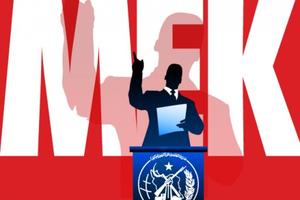Iran’s nuclear programU.S, Israel employ shady organization against Iran
Analysts have concluded that the United States and Israel may be in a strategic alliance with a former left-wing Iranian political group instrumental in the 1979 Islamic Revolution and the overthrow of Shah Rezi Pahlavi; the purpose of the alliance is to destabilize the current regime in Iran

Iraq-based MEK has been receiving support for delisting from the federal government's terrorist organization list // Source: losdiavolos.com
If it is axiomatic that politics makes strange bedfellows, than a new corollary may be that geopolitics makes stranger ones.
A case in point is the spate of attacks against Iran’s nuclear program. Iran has maintained its right to nuclear power, but many believe that purpose of the program is to produce nuclear weapons. The program and the people involved with it have been subject of a spate of attacks recently, ranging from the sophisticated Stuxnet virus to blowing up of enrichment facilities and missile bases to assassinations of key figures in Iran’s nuclear development program.
During this time, sanctions have been imposed on Iran, and discussions about even more stringent sanctions continue.
The United States and Israel – especially Israel — have warned Iran that “all options are on the table,” but whether or not a more conventional military attack on Iran’s nuclear facilities take place, it appears that the United States and Israel have turned to a shadowy Iranian group to engage in unconventional warfare against Iran’s nuclear program.
The Mujahidin el-Khalq (MEK), originally a left-wing political organization, played a role in the Islamic Revolution that overthrew the Shah.
Within a year or so of the 1979 upheaval in Iran, the relationship between the group and its former allies in the anti-Shah coalition soured, and members of the group escaped to Iraq, where they were welcomed by the Saddam Hussein regime. During the 1980-88 Iran-Iraq war, the group, with the intelligence and logistical support of Iraq, actively supported Iraq, and the Iranian regime accused the group of responsibility for the death of some 25,000 Iranian soldiers and civilians.
After the Iran-Iraq war came to an end in 1988, the group engaged in terrorist activities against Iran and Iranian officials – many of whom were killed while out of Iran.
After 2001, the group renounced terrorism and said that its only aim was to bring about democracy and support the establishment of a secular government in Iran.
There have been speculations that Israel’s Mossad has been working closely with MEK for some time. Most recently, operations against Iran’s nuclear program included the killings of Iran’s top nuclear scientists, as well as the assassination of Maj. Gen. Hassan Tehrani Moqaddam, Iran’s top missile commander, in an explosion at a Revolutionary Guard base that killed nineteen high-level officers in the Revolutionary Guard.
MEK has denied any role in these attacks, maintaining that they were carried out by the Revolutionary Guard against scientists who sought to disengage themselves from the nuclear program.
Some intelligence analysts have maintained that that action was a coordinated effort between the CIA and Mossad, allowing them to make use of a feature that neither one has.
MEK members are Iranian, and still maintain many crucial contacts within Iran, making passage through the country, and entry into its installation, far easier than it would be for outsiders.
For example, experts say that the Stuxnet malware that disrupted Iran’s uranium enrichment centrifuges was developed as a joint U.S.-Israeli effort. It is also known that the virus did not enter the facility’s systems through the Internet, but was planted into the network from a single flash drive.
No Israeli or CIA operative would have been able to achieve that level of penetration, whereas an Iranian would have had much easier access.
These activities have been accompanied by calls from U.S. political figures from the left and the right of the political spectrum to remove MEK from the State Department’s list of terrorist organizations, something the European Union has already done.
Among those who call for the MEK removal from the list are former Pennsylvania governor Ed Rendell and former chairman of the Joint Chiefs of Staff Gen. Hugh Shelton. Others include former Homeland Security Secretary Tom Ridge, New York City’s ex-mayor Rudolph Giuliani, and former NATO commander Wesley Clark.
Removal from the list of terrorist organizations would open up funding sources for MEK that are now officially banned, though some analysts maintain that Israel has been funding MEK for five years, along with some clandestine CIA assistance.
